
The sun is a very magic fellow
He shines down on me each day
—Donovan
Cambodia is a struggling nation that continues to try to lift itself up to full, modern, world-class status. While traveling to Cambodia with diabetes may seem challenging, with a little preparation and knowledge you’ll have a fun and totally problem-free trip to this fascinating, friendly Kingdom in Southeast Asia.
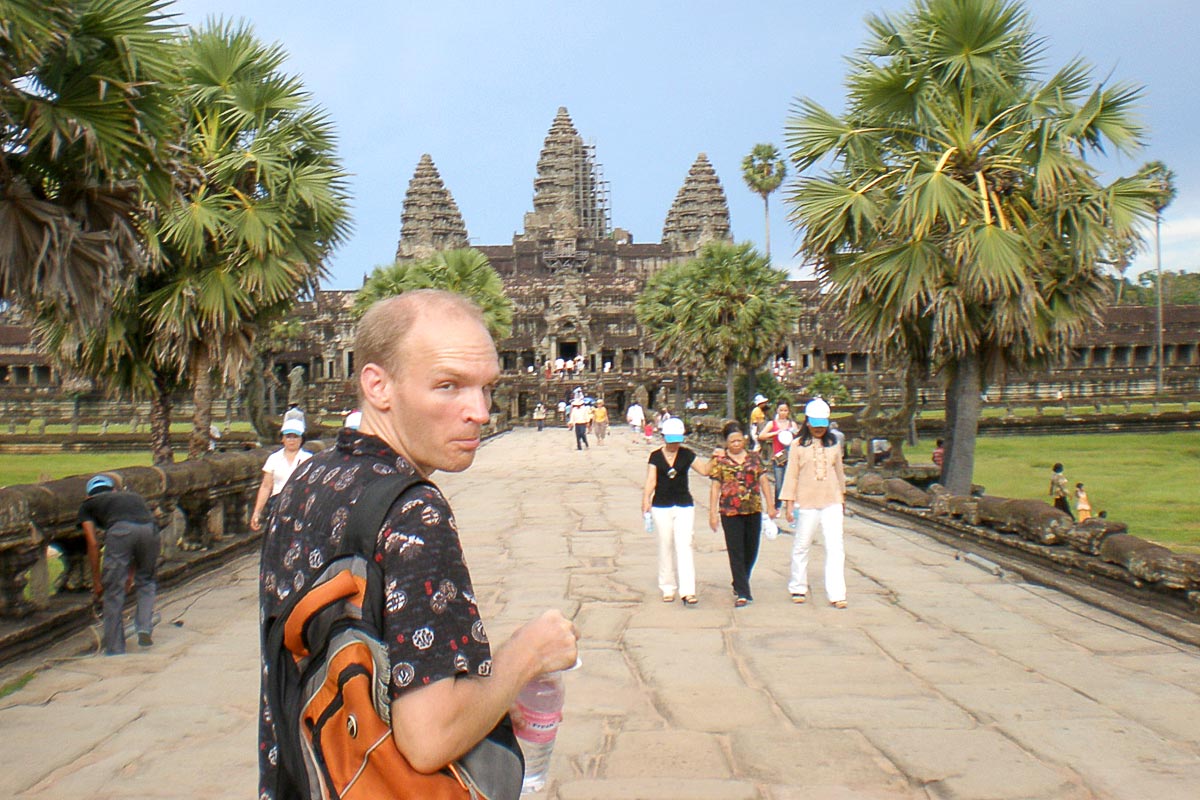
Virtually all visitors to Cambodia stop by Angkor Wat – as they should. It’s arguably Southeast Asia’s greatest tourist site, and no matter the travel-brochure hyperbole you may hear, it doesn’t disappoint. But there are many other places around Cambodia that are lovely and inviting places, for diabetics just like everyone else.

Look at these tips for hitting the tourist trail, or blazing your own, through Cambodia with diabetes. Read about food, insulin, pharmacies, blood sugar checks, and even about keeping your supplies cool in the eternally hot Khmer sunshine.
Food and insulin in Cambodia
As a traveler your meals in Cambodia will likely be based on rice and noodles. Like many Asian nations, it’s common to have white rice as a base with the main dish added on top or beside it – chicken and vegetables, or a thick hearty soup, or something else.
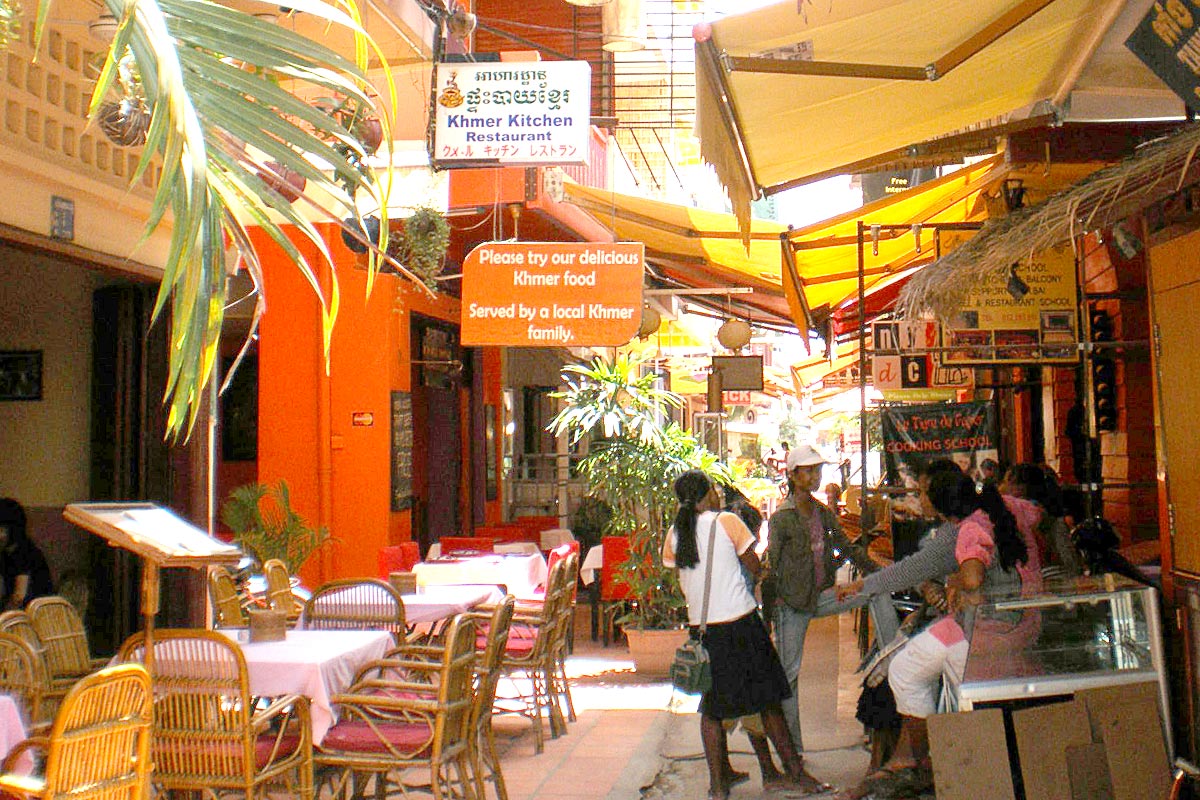
The rice can cause problems for blood sugar, particularly if you’re not used to it or if you’re eating unhealthy things in addition to it. But after some time in Cambodia eating rice-based dishes, you should eventually learn how you need to calculate your insulin dose for it.
The trick is just to guess, and then check often. Also note that the main dish added to the rice might have more carbohydrates in it than you think. So dose generously, but check soon after eating to see how you’re doing.

Small roadside eateries are common, especially in more touristy parts of Cambodia, but also in rural places as well. You won’t go hungry in Cambodia, but your selection may be limited in many places. You need to make sure you know how to take insulin for such staple Khmer foods as rice and noodles.

Bread vendor in Phnom Penh.
But in many places in Cambodia, other types of food are available. In Siem Reap, especially, the town nearest Angkor Wat, there is a large touristy selection of pizza restaurants and other non-Cambodian international foods. As with much tourist food in the world, these can be very high in carbs. Not impossible to eat for a diabetic, but requiring some attention and some smart choices with insulin.
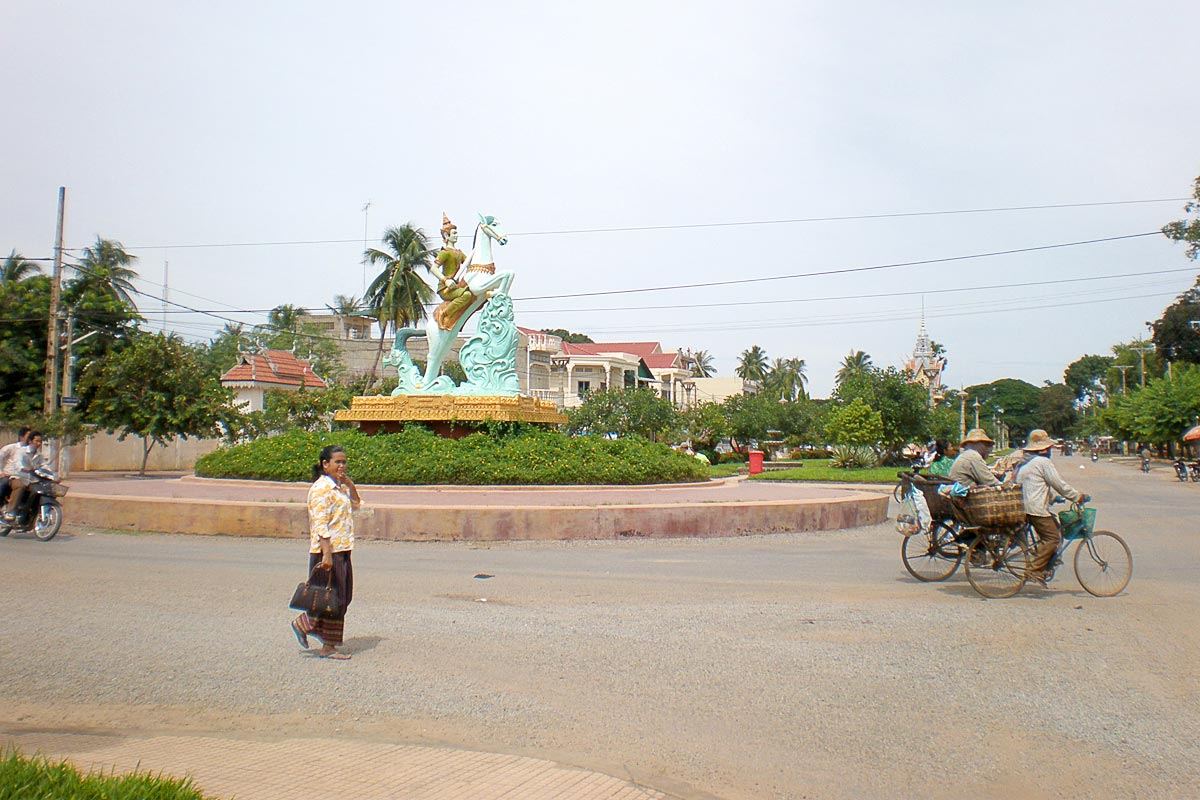
How to speak Khmer – for T1Ds
The Khmer language is difficult to grasp and to pronounce for many foreigners. If you need to communicate about diabetes to anyone, it’s best to find someone who speaks English. Fortunately, most places that deal in medical matters – hospitals, clinics, and pharmacies – will have or can find someone who speaks basic English.
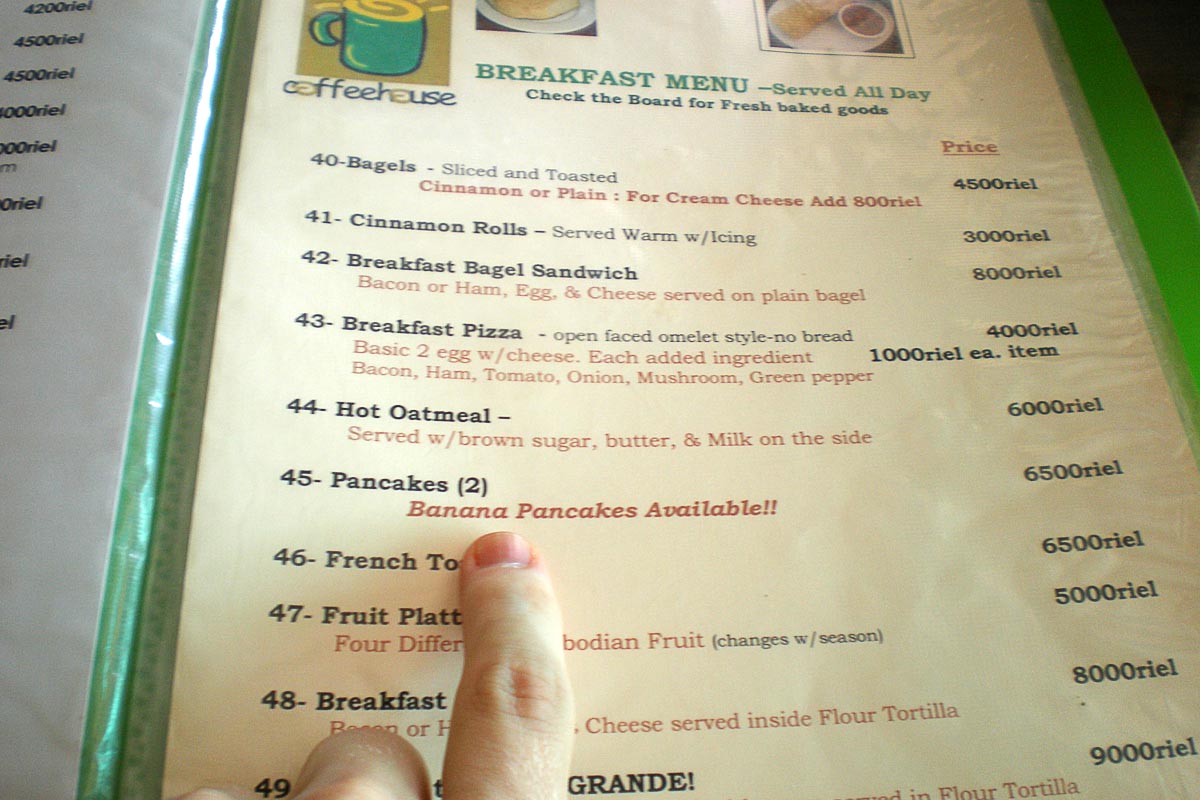
English menu with banana pancakes – no problem communicating here!
If you want to try, though, the Khmer word for diabetes is chomngu tuknomophaem , which is written ជំងឺទឹកនោមផ្អែម. To pronounce it, try something roughly like “chum-goo duke-nomo-peh-um”. With your foreigner’s intonation and lack of grammatical context, this is likely to not be understood, but I’ll be impressed if you try it!
If you show an insulin pen or a blood sugar monitor to a medical professional in Cambodia, they will understand. They may also well understand the phrase “DIABETES MELLITUS” or “T1D” or “DM”, so it’s recommended that you wear a piece of medical jewelry with one of those English phrases on it. You can also copy the Khmer script version above and print it out before you go to show someone if you need it.

As with most communication in Cambodia, gestures, smiles, and patience will get you a long way, even when it comes to diabetes. However, the most important point to remember about traveling to Cambodia with diabetes is this: nothing bad will happen to you!
Exercise in Cambodia for diabetics
You may be walking or biking around in Cambodia, especially at a place like Angkor Wat. Even if you stick to air-conditioned bus tours, there will likely be some strolling through the ruins and scrambling up and down stairs or piles of old stones.

This can affect your blood sugar later when you’re eating, of course, making you require a little less insulin. But it also means you need to always have plenty of low blood sugar snack with you.
This means stocking up when you can. Little shops that sell bottles of juice and/or packages of cookies are very common, but there may be nothing around when you need it. When you see a place, buy what you might need and then a little more. Don’t get stranded somewhere without it!
Keeping insulin cool in Cambodia
Cambodia is hot. When you go outside, the sun will be beating down on you unrelentingly. You, and your insulin.

Insulin kept cool enough in a backpack, down inside not in the direct sunlight.
For all-day excursions, it’s important to keep insulin cool enough that it doesn’t go bad. This can mean putting it in your day pack with an ice pack, like a Frio bag. For shorter excursions, it can be okay to skip the ice pack as long as you keep your diabetes supplies a few layers away from the direct sunlight. Wrapped up in a couple shirts, stuffed down in a bag slung across your shoulder should be fine.
Almost all hotels and guesthouses will have a refrigerator you can use – in your room for more upscale places, or somewhere in the back office for smaller hostel-type places. This may not be strictly necessary, if your supply is in your room down in your bag, but can’t hurt. Don’t forget to take it with you when you check out.

Cabin fever sets in in southern Cambodia.
Diabetes supplies in Cambodia
Speaking of insulin in Cambodia, to avoid hunting for replacement supplies while there, just take what you need with you. Calculate about how much of each thing you’ll need – types of insulin, blood sugar testing supplies, etc – and buy double that before you leave. Split everything up into at least two parts; I’d suggest putting part of your stash in each bag you’re taking with you to Cambodia.
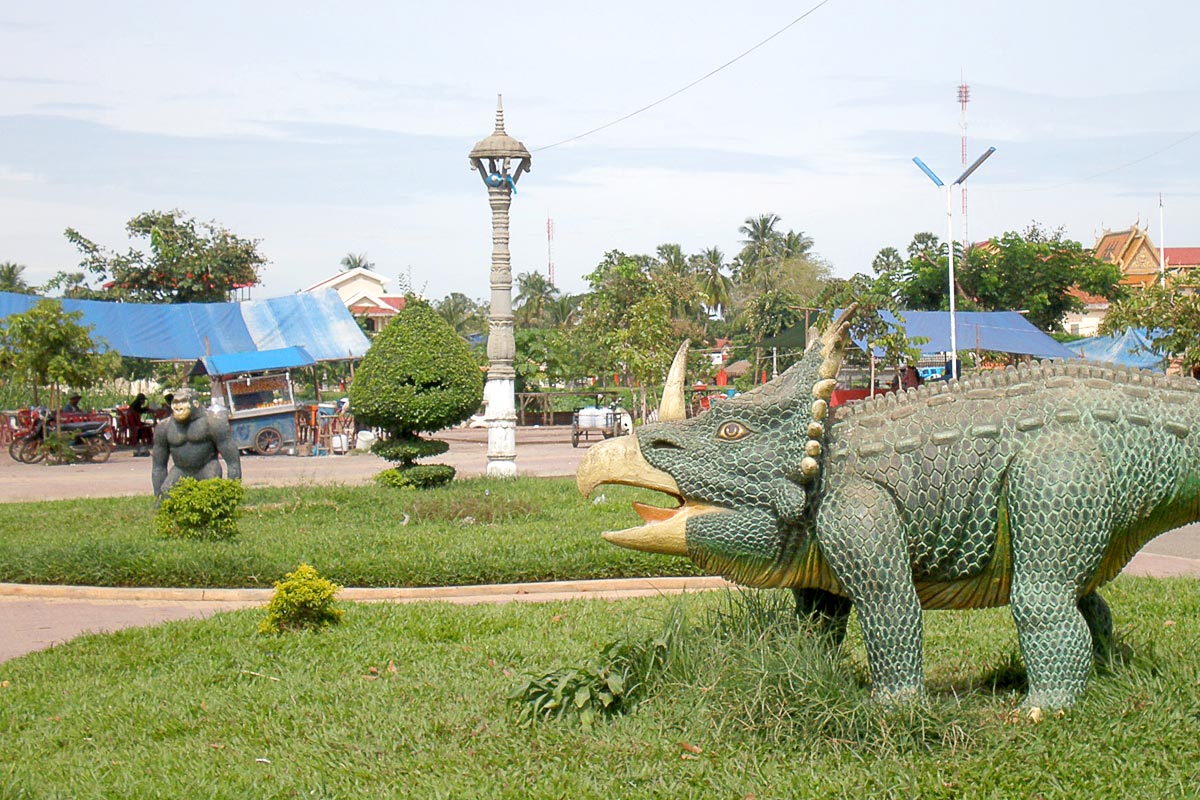
But if you do need to buy supplies while you’re in Cambodia, it can be surprisingly easy. Especially in larger towns, there are well-stocked pharmacies, and if they don’t have what you want they can usually order it in a few days.
As for selection, this is an always-evolving and changing thing. I once asked a pharmacy in Phnom Penh for Novolog insulin, but they only had ActRapid. I had little choice but to buy it, and it worked fine for me. They also had other types of insulin in their cooler, plus blood sugar meters and test strips for Accuchek, OneTouch, and others in stock and on the shelves.
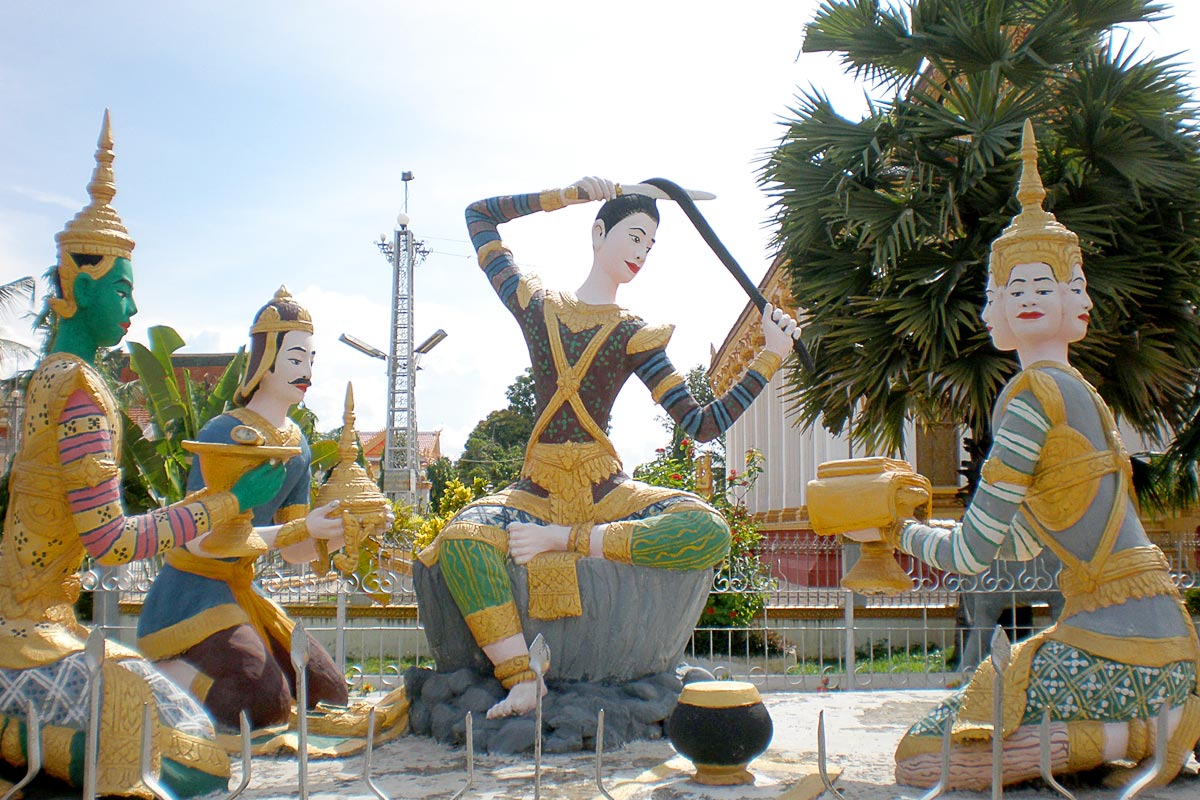
Showing what you have as a way of communicating can make the transaction smoother, and you may need some time to find the right pharmacy and, possibly, let them order something for you which can take several days. Watch your supplies closely and if you are starting to get low on them, go forth and start seeing what you can find. Give yourself enough time.
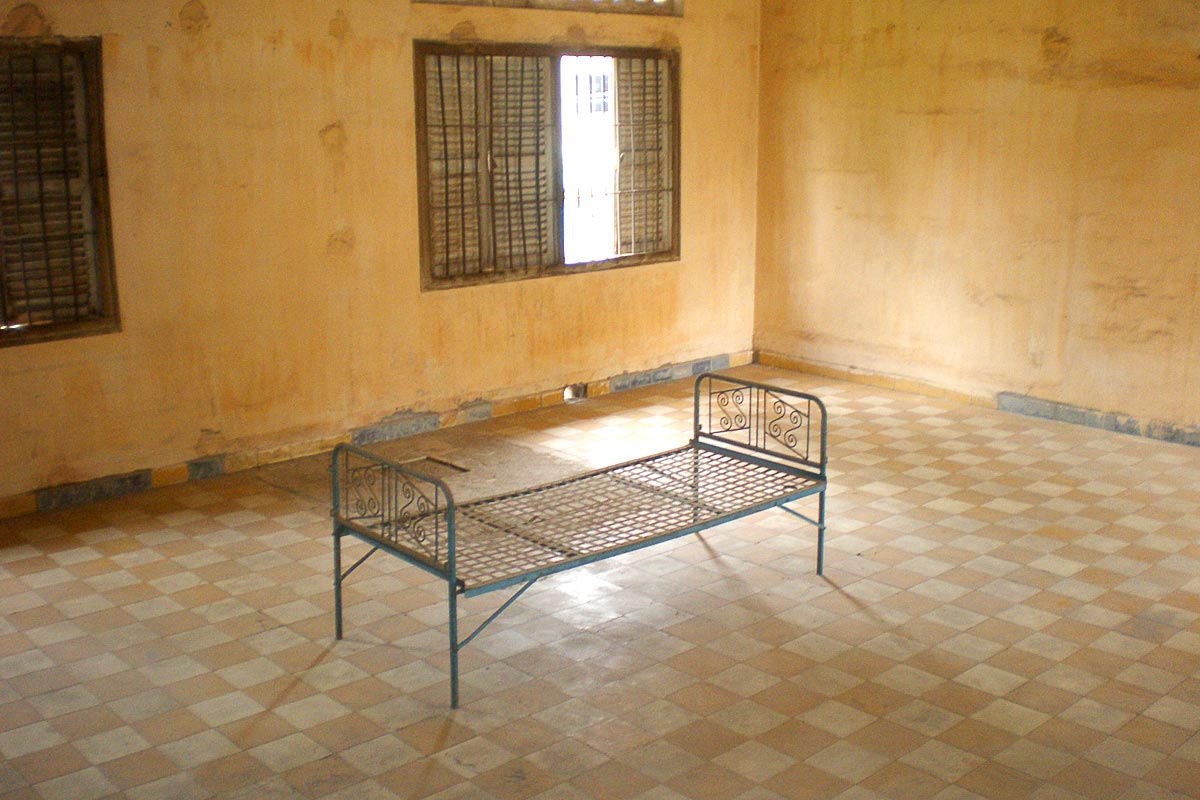
A room in Khmer Rouge’s S-21 Prison museum.
Staying safe in Cambodia with diabetes
Cambodia has a very relaxed way of life, as befits its hot weather, its endless green trees and dusty ground, and its lack of heavy infrastructure. A trip there is likely to include lots of time outside, perhaps getting exercise, and eating carb-heavy meals.
Diabetics who carefully monitor their blood sugar and always know where their supplies are – insulin and low blood sugar snacks especially – will have no problem. If there is some emergency, medical care can be a little rough but it exists. People want to help, and if you have proper insurance you can be covered for evacuation from rural places and things like that.

Once in a small Cambodian town on a Saturday morning I had to make a sudden (non-diabetes-related) visit to the local provincial hospital. The few people there spoke no English, but they called a doctor who did. He came in, on his day off, looked at the patient and wrote a prescription. As if that weren’t enough service, he gave me and my sick travel partner a ride on his motorbike around the corner to a little dirt shack of a pharmacy, and then a ride back to our guesthouse. He refused a gratitude payment for his service, and the medicine worked immediately.
Things always work out!
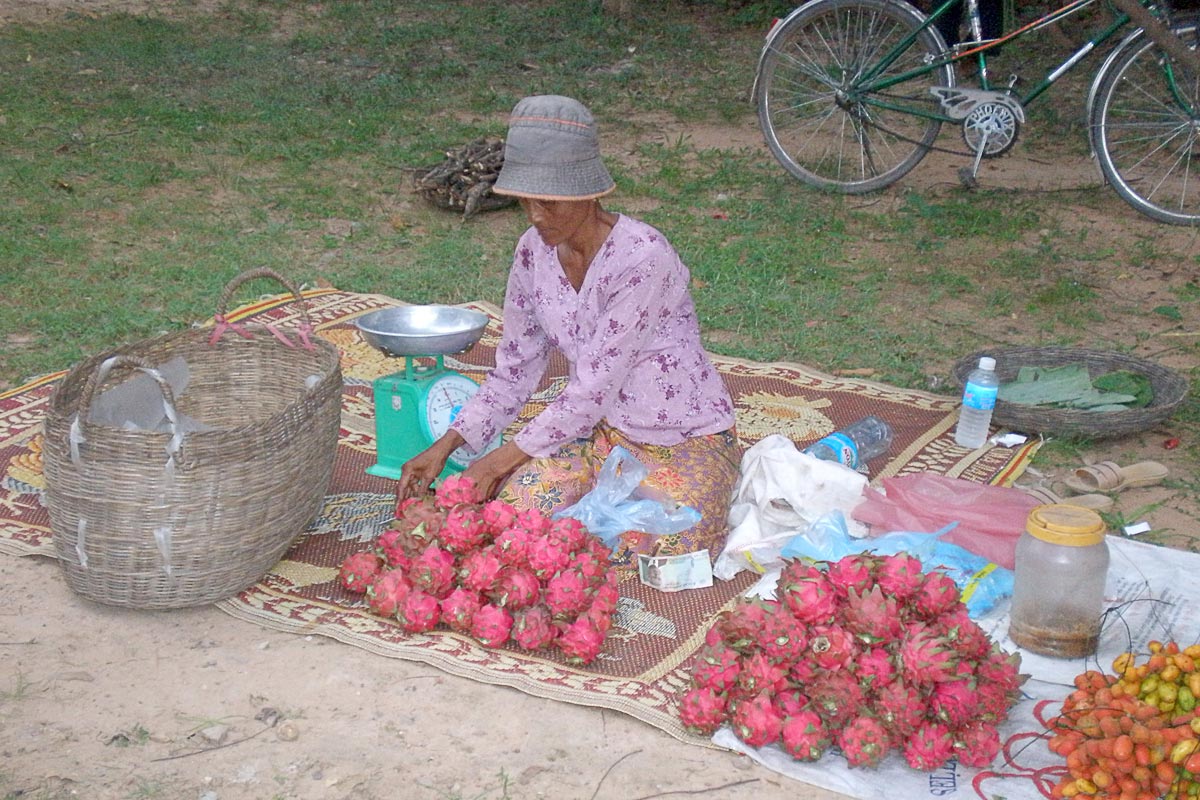
Dragon fruit seller.
Your trip to Cambodia with diabetes
If you have been to Cambodia, with (or without) diabetes, I’d like to hear about your experiences with food, insulin, blood sugar, or anything else there.
If you’re thinking of visiting Cambodia but are worried or concerned about something there related to diabetes, let me know that too.
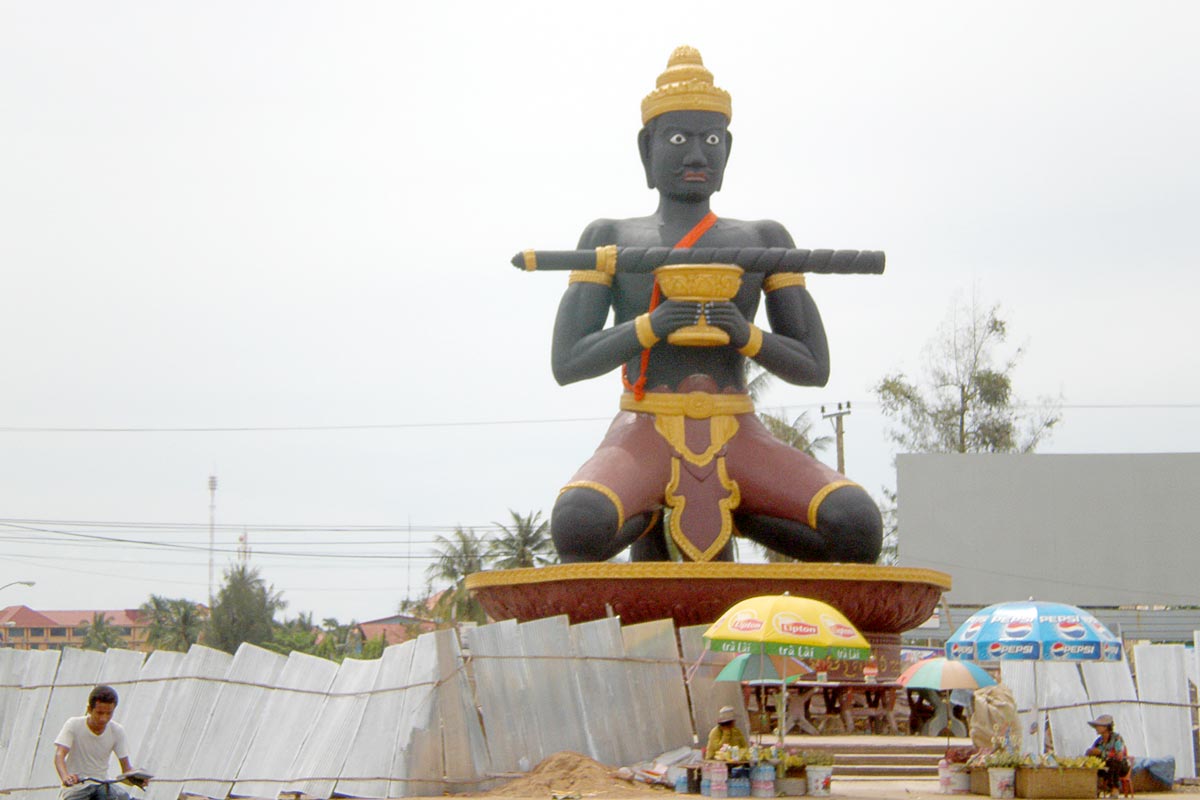
The important thing is to have a good attitude: make sure you have enough insulin and low blood sugar snacks, and that you have the right frame of mind and the knowledge that nothing bad will happen to you. It boils down to this:
You can go anywhere with diabetes!
Read more about my travels in Cambodia
Come along on the adventure! Follow detailed travelogues about the wondrous sights, fascinating people, and varied diabetes experiences I encountered as a traveling T1D in Cambodia:
Day 218: Why Nobody Stays Overnight In Poipet
Thanks for reading. Suggested:
- Share:
- Read next: Tips for traveling to Vietnam with diabetes
- News: Newsletter (posted for free on Patreon every week)
- Support: Patreon (watch extended, ad-free videos and get other perks)

Support independent travel content
You can support my work via Patreon. Get early links to new videos, shout-outs in my videos, and other perks for as little as $1/month.
Your support helps me make more videos and bring you travels from interesting and lesser-known places. Join us! See details, perks, and support tiers at patreon.com/t1dwanderer. Thanks!

TALK ME ABOUT DIABETES IN SVAY RIEANG, HAVE ASSOCIATION OF DIABETES IN THIS CITY, IS EASY TO FIND INSULIN IN THIS CITY OR NO. ABOUT HOSPITAL THEY HAVE CARE ABOUT DIABETES.
Can I find any insulin in Kampot?
I’m not sure about the details of pharmacies and hospitals in Kampot. It’s a smaller town but I would guess that if there isn’t a store that has insulin, then there is a store (pharmacy) that can order some for you. But it’s just a guess – if you learn more please come back and let me know what you find. Thanks and good luck!
Hello,
Did you have any issues at the Cambodian airport going through customs with diabetic supplies? Any advice on that would be great!
Derek,
Actually I didn’t use the airport in Cambodia. I entered and left overland. I’m sure with all the zillions of people flying in to see Angkor Wat, etc, the officials there are used to people with diabetic supplies. You can take a doctor’s note with you to be sure (look for the template on this site). Good luck!
What did the insulin cost in Cambodia? Here in the United States, it costs over $300 pr bottle without insurance…
Heather,
I can’t recall the exact price but I do believe it was quite a bit cheaper than in the US. Several times cheaper, IIRC.
Jeremy
hi! i’m french,i’m 19 years old and as a T1D, i will travel in thailand,cambodia and vietnam in 3 month and don’t know how much cost insuline and where i can find it..
can i take few bottle in france to travel 3 month without buy a bottle over there?
thank you!
noé
Hi Noé,
Yes you can take insulin for three months and carry it with you over there. Those countries are hot, of course, so make sure you take a Frio cold pack or something similar to cool your insulin down.
If there is an emergency you can buy insulin locally there. Just go to any pharmacy or hospital or clinic and they can help you. They might speak English or even French. Don’t worry, you’ll have fun there!
Jeremy
Thank you Jeremy. I am off to Cambodia with the fam very soon and starting to panic about being so far from home without access to insulin. I am on a pump and sensors and will take back up of pens if I can get them prescribed. Its rubbish being so reliant on medication when I want to travel.
Hi Jeremy, would you be able to tell me where you disposed of your sharps bins whilst you were away and how you got more please? I am traveling Asia for about 3-5 months and can’t seem to find much about this online, thanks.
Hello! Travelling in SE Asia now, I see all sweets (cookies, ice tea,…) contain only very little sugar – e.g. 4g per 100g. Packing for many day hiking trip, do you have a recommendation for sweets with high amount of sugar? Will be in Bangkok to re-stock
This forum seems dead, but just in case: problem solved in Vietnam, sweets have high sugar amount (20-25g/100g). In Laos, Cambodia, and Bangkok however I was unable to find high sugar amount sweets.
I lived in Cambodia for seven years (2003-2010) as a type one diabetic from the USA. I was very fortunate I ran a NGO there and had connections with people who worked for the world health organization. One guy that worked for WHO was also a type one diabetic and he would order double his insulin needs and share with me his Humalog and Lantis that, back then, he had to go to Bangkok to get.
Currently, I am working with a young man in Kampot who is a type one diabetic and I’m helping him get insulin and test strips etc. he’s really struggling, there’s no healthcare there and if you don’t have the money you just die and they don’t care.
On a brighter note:
A couple of funny things I learned while living in Cambodia is the word for diabetes, actually translates into “sweet piss“.
Also, type two diabetics tested blood sugar in the countryside by urinating next to an ant hill. If the ants come quickly to the urine, they know their blood sugar is high. This actually works. I’ve done it just to see if it was true and it really is.
I’m now on an insulin pump and I’m going back to Cambodia next month I will be gone for eight weeks and I am having one hell of a time getting my pump supplies ahead of time from Medicare. It is a fucking nightmare. I know I can go back to using pens when I’m in Cambodia. I know how to get my needs met over there, but it is just such a bummer to see that as a type one diabetic, America basically wants to be in prison me in this country right now it’s disgusting. I’m going anyway. I don’t give a shit. I will figure it all out. I honestly feel bad for diabetics were afraid to travel. I’ve done everything from Sucking INSULIN out of a pen, squirting into a spoon and then sucking it back up to inject to keeping my insulin cold in a river overnight. It’s all about problem-solving skills. We have one life to live and I’m living mine!